From Editor
We are delighted to offer you this interview with Dr. Nicholas Fennell, son of John and Marina Fennell. John Fennell was an Oxford Professor of Russian and an eminent Russian mediaevalist. His last work, A History of the Russian Church to 1448, is an invaluable textbook, which has been used in Holy Trinity Seminary.
Nicholas Fennell was a Senior Scholar at Trinity College, Cambridge, graduating with an MA in Modern and Mediaeval Languages. He was awarded a Ph.D. at Southampton University. He was a guest lecturer at Yekaterinburg University on the European Community Tempus JEP Scheme; and he has taught at the University of Toulouse, France, and in Yerevan State University, Soviet Armenia. Until his retirement in 2013, he worked for forty years as a teacher of literature and languages at Winchester College. He was recently appointed Visiting Research Fellow at the University of Winchester.
He is the principal author of Russky I´insky skit na Afone (Moscow, 2011). He also wrote The Russians on Athos (Bern, 2001), a study of the uneasy coexistence of the Russian and Greek Athonite monastic communities. Rather than take sides, the author examines arguments of all parties on their own merits. He makes a case study of the Prophet Elijah Skete, with which his modern story of the Russians on Athos begins and concludes. Since the skete was connected to and supported by the Russian Church Abroad, I believe that our interview is well suited to the Historical Studies website of the Russian Church Abroad. The notes in square brackets are of the editor.
Deacon Andrei
Thank you very much for giving this interview today. It’s an honor and pleasure for me to be here since we [at Jordanville] have been using for a number of years a textbook written by your father, Professor John Fennell of Oxford. It’s a really outstanding textbook, regardless of English or Russian, because of his foundation in primary texts. And I would like to ask you about your parents.
Yes. What would you like to know? My mother is still alive. She was born in 1925 in Harbin, China (Manchuria), on the way out from the advancing Bolsheviks. My grandfather, Nikolai Sergievich Lapoukhin, member of the gentry, was prospecting in Siberia with his cousin, Troubetzkoy, at the start of the [Russian] Revolution and he sent my mother’s family (before she was born) by train to the east, and he followed. He was arrested in Ekaterinburg, where the Emperor was with his family at the time, and they suspected him of collaboration or being sort of connected with the Emperor. And they put him into prison and he, miraculously after less than a year in prison, was released because his cousin (I can’t remember her last name at the moment) wrote, and he was pardoned and released, and he then got onto the train and…
His cousin petitioned the Bolsheviks, right?
To the Bolsheviks, to the prison officers. He was released and he then joined the family in eastern Siberia. They went onto Harbin where my mother was born. After that, the “red tide” went further east and they had to leave as stateless people. They still had plenty of money and they more or less hired a ship and went around the world through the Panama Canal, arrived in New York, stayed there for a bit, didn’t very much like it, and crossed the Atlantic, landed in France, and settled in Paris.
You’re talking about the events that followed the 1949 Revolution in China, right?
Oh! no. This is long before that because my mother was born in ‘25 and almost immediately they left on this round-the-world-voyage and ended up in Paris. They went to Clamart and part of the great diaspora…
What later became Troubetzkoy’s nest?
That’s right. That’s my mother’s side. My mother met my father in Paris. My father was a great friend of Dmitri Obolensky, who had already got married to my mother’s sister, Elizaveta Lapoukhina, and my father was introduced to the family: I think he might have been demobbed or not quite demobbed yet, and met my mother, and within three weeks of meeting my mother, they were engaged. They got married and my mother then came to live in England. My father was in the British Intelligence in the Second World War and he graduated: he got a “War” degree from Cambridge in French and German. He spent the War, partly in Egypt, in Cairo – he fought with Rommel – and partly in Italy.
He became Orthodox in Bari, Italy?
Yes. After, or maybe possibly in Egypt, because he had, I believe, meningitis, and he was one of the very first people to be cured by penicillin, and it was a sort of miraculous cure. Anyway, he became Orthodox, and he came back to England. In Bari, he used to go the Russian Church. When he came back to England, he switched disciplines and became a lecturer in Russian with Professor Lisa Hill, later Dame Elisabeth Hill, Professor of Russian Studies or Slavonic Studies in Cambridge. I was born in 1949 when he was still a lecturer. He then moved to Nottingham. I’m afraid I don’t have the dates when he went to Nottingham. He was a Reader in Russian in Nottingham before moving to Oxford. At Oxford, he was again a Reader in Russian. During his stay in Oxford, when he became a Russian mediaevalist, his specialty being Muscovy. His first important published work is the correspondence between Tsar Ivan IV [Grozny] and Prince Andrei Kurbsky. Then, his most important work, perhaps, is The Emergence of Moscow 1304-1359 [1968]. He was also a great friend and supporter of Aleksandr Aleksandrovich Zemin, who is a brilliant scholar in Moscow, and he questioned the authenticity of the Slovo o polku Igoreve. The Soviets at the time thought it was the original authentic document; he said it wasn’t authentic and my father supported him. Aleksandr Aleksandrovich was under a great deal of pressure and stress from the Soviet authorities for this reason. My father became Professor of Russian at Oxford. He was Fellow, first of University College, and then of New College, where the Professorial Fellowship is. In his time at Oxford he received Anna Akhmatova and Dmitrii Sergeivich Lichachev, and a number of other important people from the USSR, and including also – I’m afraid my memory with old age is not very good – [Nadezhda] Mandelstam. My father died – when he had not quite completed the work you mentioned about the history of the Russian Church [A History of the Russian Church to 1488. (1995)] – suddenly of cardiac arrest in 1991 on Saint Panteleimon’s Day, August 9th [n.s.]. That’s sort of a brief history of my parents.
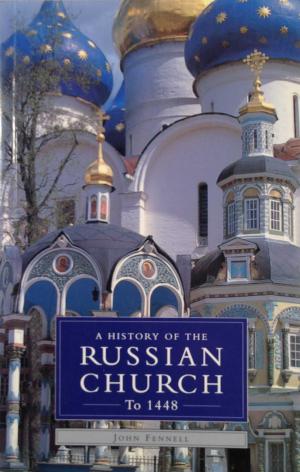 Would you tell us about his involvement with Russian Orthodoxy?
Would you tell us about his involvement with Russian Orthodoxy?
Well, his real involvement was, I suppose, simply medieval Russian history, and he was a member of our parish in 1 Canterbury Road [Oxford] where perhaps the most distinguished member of the parish was Vladyka Vasiliy (Krivoshein). When he was there, I used to serve in the altar. And also, Vladyka, (Metropolit later) Antonii (Bloom) used to come to visit us a lot, and he would come also as the visiting bishop because 1 Canterbury Road was under the Moscow Patriarchate. So, he was a member of the parish, and his father confessor was Vladyka Antonii. When Vladyka Antonii died, his father confessor (that was really in his last year) was Archbishop Anatoli Kerchinskii, also of theMoscow Patriarchate. All I can say about my father is that he was very, very keen on everything being in Slavonic. He did not like going to services in English. And I remember there was a time also when Vladyka Antonii, who we used to call “Vladyka”– he was a friend of the family: my mother knew him before he became a monk (he was simply “Andrei”); indeed, before he became a Christian, or became a believer, rather – Vladyka, at one time, was thinking of having services entirely in English in Ennismore Gardens in London, perhaps on alternate Sundays, and I remember my parents – my father particularly – asking me and my sister (we were only about 12 or something at the time) to write a letter to Vladyka, saying that we very much would like to have the services in Slavonic. My father and mother wrote us the letter; we had to just copy it out. I remember one of the phrases was “po slavanski krasivie”. It’s not a very good argument but I suppose for a child it is.
Interesting. And here, in this country, Orthodox – they probably live very closely to each other, and I just wondered about your memory associated with the Russian Church Abroad, if you can share some of your recollections…
…Well, my recollections of the Russian Church Abroad are limited because I’ve always been a member of the Moscow Patriarchate. I would go to Vladyka Antonii in London and also in Oxford. In 1 Canterbury Road, we had this unique parish which was both Greek and Russian: it was sort of shared. But my real contact with the Russian Church Abroad was when we would to go to Clamart, and I would go to two churches in Paris – one of them was our church, Constantine & Helen in rue Henri in Clamart, which my forebears built. It’s a wooden church – still there – and I would sing there and read,and then I would go to the Sergieskoe Podvorie [belonged to Archbishopric of Russian Churches in Europe under Ecumenical Patriarchate, firstly under Metropolitan Evlogii Georgievskii +1945], where I always used to say (because I’d never been to Russia when I was very small) was the best singing – I always used to think – in the world. My what I called “Daddya Koliasa”, Nikolai Ossorguine was the choirmaster there. What do I remember about Clamart? I remember that my very first confession was with Otets Kyprian Kern, who was my mother’s spiritual father, and my father’s initially. Then, our parish priest was Otets Georgii Drobot, who lived and worked in the candle factory in the podvorie. Otyets Georgii was there for many years.
Do you mean in Clamart’s church? Did he succeed Father Kyprian?
Archimandrite Kyprian: yes, that’s right. And then, I suppose, once I left Cambridge, where I graduated, and started working at Winchester College, in 1974 or 1975, I went less and less to Clamart. Oh! no! Yes, in 1975, I had a year in France: I was in Toulouse and I would come regularly to Clamart. My babushka died and was buried there in ’75. After that, I went less and less, and really, I’ve been mostly to Vladyka Antoni’s in London.
Right. Then you also became a historian of the Prophet Elijah Skete which is strongly, strongly connected with the Russian Church Abroad. Would you tell how it happened and also would you tell about your experience with Prophet Elijah Skete.
Yes, of course. In the 1980’s – unfortunately, I cannot remember exactly when – oh! yes, I got married in 1982 – and in 1981, before I met Vasiliki, or, rather, indeed in 1980, for some reason I decided I wanted to learn Greek. I started going to evening classes and then I visited Greece and stayed with an
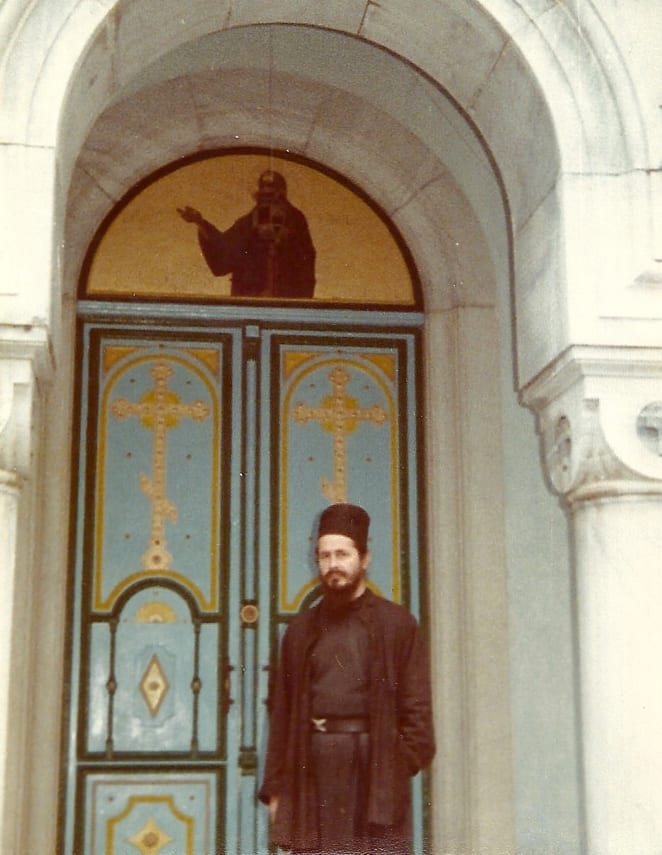
A confessor of the skete Fr. John (Melander, +1989), originally from HTM, Jordanville. Photo: Nicolas Mabin, August 1978
old [British] pupil of my father’s who lived there, who became a naturalized Greek, and had a house in Thessaloniki… …And he and his wife were both army officers, and they became naturalized Greeks.
That’s because it was very complicated to own property for non-Greeks at that time?
No. It’s because they were Orthodox and they wanted to live in Greece. They became Orthodox in Oxford, in Canterbury Road [Moscow Patriarchate]. And so, I went there and my ultimate aim was to visit Mount Athos, and my first contact with Mount Athos was when I was on the choir loft – in Canterbury Road I used to sometimes sing simply as a reader and chanter – and I remember seeing in the service book in the red print in Slavonic, and I saw the line referring to the Athonite liturgical practice. On Mount Athos they ring a bell or they strike a simandron [wooden hammer and block for waking people up] or something like that, and that fascinated me. I heard about Athos and I thought “This is a place I must go to.” And so, I went to Mount Athos in 1981. I had already met Vasiliki by now [future wife]. And I went to Simonopetra and I went to Russik, Saint Panteleimon Monastery. 1981, of course, was the time when the Russik was in a very bad state. There were two – probably – fathers there who had come from Russia, and, as you know, they probably didn’t stay there for a long time and went back. And I remember going up the Pokrovskii Sobor because I learned that that was the only place where the Russian services were and saw a youngish monk with a red beard. It was the week after Easter and I said “Christos Voskrese” [Christ is Risen!] and he didn’t reply. He said “Gennadi, Gennadi, did you hear he said “Christos Voskrese.” So that then got me interested in Mount Athos.
I taught Russian in Winchester College, which is a private school (known in England as a ‘public school’), the oldest public school in England, 640 or 650 years old. It is the mother of Eton College. I became Head of Russian and French, and also generally literature. I had a sort of general literature class, and I taught there for forty years. It was in those days a very excellent place for study. Every seven years I was entitled to a sabbatical. I had a really long sabbatical in the summer, and that was still in the ‘80s, and I thought “I must do something with this.” I said, “I am going to write about Russian Athos,” because, when I went that first time to Saint Panteleimon Monastery, I remember walking from Daphne, the port, along the coast and getting terribly lost on the way: I kept on going down to the sea and climbing over rocks and finally got to Saint Panteleimon Monastery. And I came to a great big building which belongs to Saint Panteleimon which had no roof, no windows, and there were goats grazing on the floor, and I thought “This must have some sort of history.” I could just feel the history there. I must find out about this. And so, I went back to Thessaloniki – by now I was married to Vasiliki – and I stayed in Vasiliki’s parents’ house in Iannitza, to the north of Thessaloniki, and went to the Ministry of Northern Greece and got my diamonitirion [permission to visit Mount Athos] and went to visit, and said I was going to do some research. But I had no clue how to research the Russian Mount Athos, whom to contact, what to read, nothing! So, friends of ours introduced me to Anthony Emil Tachiaos in Thessaloniki. I went there with my brother-in-law, who’s now an archimandrite on Mount Olympus in Saint Dionysios Monastery: then he was just Dmitrios. Now he’s Father Silouan. And I remember my first interview with this gentleman. He said, “What language would you like to speak – Greek? Russian? English?” He said, “OK. I’ll speak English to you.” He said, “You want to study the history of the Russians on Mount Athos? It’s a very interesting topic. I stayed two years ago for six months in the Russian monastery. Unfortunately, things have changed and I’ve no more access to the library. This is a history that needs to be written. I wish you best of luck.” And he lent me the most invaluable books. He lent me Dmitrievsky’s Russkie na Afone, and a couple of other books. And we went immediately and photocopied this in a shop, and I read Russkie na Afone. This was the absolute starting point for me, an amazing book which told me all about the Græco-Russkii process for the election of Archimandrite Makarii, the first Russian abbot of Saint Panteleimon in 1875. He also lent me another absolutely vital thing which was that very important study by Igor Smolitch, Le Monte Athos et la Russie: dans Le millénaire du mont Athos, 963-1963 printed in 1963 Chevtogne, and it had the bibliography, without which I could never have survived. With this bibliography and with the Russkie na Afone, I started going to the University of Cambridge Library and got as much I could from there, and then eventually I got a reader’s card in the British Library, and I started accumulating books. The breakthrough came, as far as bibliography is concerned, when my father died, I got from Greece – because I had just been in Greece on another sabbatical – I got the big work on the history of Athos by Gerasimos Smyrnakis, called Aghion Oros, and there was a lot on the Russians on Mount Athos and he was very, very anti-Russian. So, I had two points of view. I had the Russian point of view and the Greek point of view. Shortly before this, I went with Vasiliki’s uncle to Mount Athos and we went with a group of people on a sort of pilgrimage. He took us around the monasteries and we went to the monastery of Pantokratos, the governing monastery of the Prophet Elijah Skete.
This was 1988. So, that was your first introduction to Prophet Elias Skete?
…Yes, it was. We walked from Karyes down to Pantokratos, and on the way, there we saw this beautiful Russian Orthodox cross, and a little signpost, saying “Skit Sv. Proroka Elii” and “Russkii Eliinski Skete” [St. Elijah’s Russian Skete] and I thought, “I really must go there.” My uncle and his party left, and I went up there and that was my introduction to the Prophet Elijah Skete [the term skete in the Russian tradition is different from the Byzantine usage, where it meant a number of monastic cabins and a church]. The year before, I have to say, I was still sort of desperately trying to find something that I could get my teeth into, as far as research was concerned, and one of the things I thought would be to go to Simonopetra Monastery, because I knew one of the fathers there, who was very kind to me when I first went to Mount Athos – he’s now actually the Igoumen of Simonopetra (Afanasios) – and he said, “Come along any time. We would be very happy to receive you.” I wrote then, all those years later, to the abbot of Simonopetra, “I would very much like to come along and have a look at your library and look at links between Simonopetra and the Russians.” On the day of my departure I got a letter from the abbot, saying, “I’m afraid that there’s nothing you can really see in our library.”
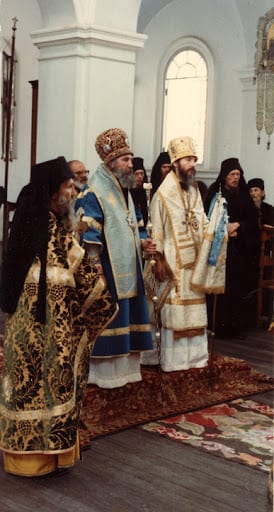
Glorification of St. Paisii of Niamet. July 1982. Left to right: Fr. Seraphim (Bobich), Archb. Lavr, Bp. Mark, Fr. Anthony (Torp), Fr. Seraphim of Karoulia. Protod. J. Onopko behind Vl. L. and Fr. Aleksandr (Gorachek) behind Vl.M. Photo: Monk Veniamin (Frumkin)
From Father Seraphim?
No, this was from the Igoumen of Simonopetra, or his secretary… “There’s nothing you can actually see.” Then I actually went there and stayed there. A group of Greeks and I were being shown round the monastery by the librarian, actually. I came up to the librarian and I said, “Could I have a quick word with you after this tour?” He said, “Yes, of course. What do you want?” And I said, “I wrote to the abbot and I’m interested in connections between Russians and Greek Athos, and particularly Russians and Simonopetra.” His face changed and he said in Greek, “We don’t want you to poke around in our library.” So, the library was closed. That was not very good. And so, I just walked into Prophet Elijah Skete… This was 1989, when I first went there. Or maybe 1988, three or four years [before]. I just walked in. It was August – very, very hot. The main gates give right on to the little parvis in front of the main church, and there is the well of Saint Paisiii Velichovskii. In front of the well was a monk with a number of visitors and they were all shelling peas. And I came to him, and said, “Hello. My name is so-and-so.” I spoke Russian. The monk there was Hieromonk Ioannikii, who was from Jordanville, of course. He was very warm. He said, “Come along! Come and sit down, if you don’t mind doing a bit of shelling. Help us with these beans, and then we’ll talk.” So, I helped with the beans and told him all about it, and he was wonderful. He gave me a room – a “cell” as they call it – and he said, “Come along to the library.” I went to the library, which is his domain, and there in the library – it was just like, as the French say: “Je trouvee le perue”, a sort of goldmine. There was a table, neatly stacked with his archives. He said, “You’re welcome to have a look at this.” I said, “I’m [interested in] modern history.” And I knew about the Prophet Elijah Skete; it was founded in 1760, or whatever it was, and so it is relatively modern. He said, “Well, here is all the modern archive we have. And the most valuable bit is here: the Acts, that is the minutes of the meetings of the Synaxis of the Twelve Elders from 1908 to 1910 (I think).” And then that was [in the time of] Igoumen Maxim, and then 1914 to virtually 1930-something-or-other, during the reign of Igoumen Ioann. All written out. This is the more fantastic material. He says, “You are welcome to come and study here, and we’ll study together.” So, I learned how to photograph, and I took microfilms of everything I could get hold of, but mainly of this archive, which you will have seen in the book which is published by Indrik in Moscow.
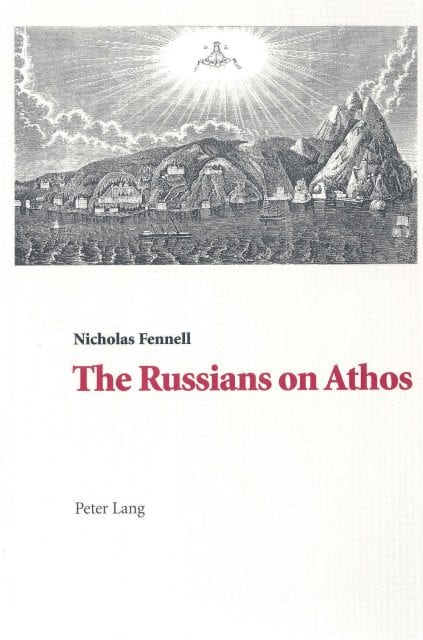 Right, White color? I did buy it for the Jordanville seminary library in the Russkoe Zarubezh’e store in Moscow. I haven’t acquired a copy for myself. Right. And, of course, you also covered the latest history, when…
Right, White color? I did buy it for the Jordanville seminary library in the Russkoe Zarubezh’e store in Moscow. I haven’t acquired a copy for myself. Right. And, of course, you also covered the latest history, when…
Right up to the expulsion of the fathers in 1992.
You do talk about this, right? And I understand, after the [Second World] War, Jordanville, in my understanding, used to be the biggest Russian-populated monastery outside of the USSR, until Saint Panteleimon’s Monastery was re-populated again with monastics from the Soviet Union. Two other sketes made a different choice. Saint Andrew’s Skete and Saint Elijah’s Skete tried to attract monastics from the diaspora but they have never fully succeeded. And there were a couple of people who were very supportive. One of them, with whom I was in correspondence, was Vsevolod Petrovich Vashchenko from Stuttgart.
He was one who helped to send around leaflets and to attract potential monk candidates. But you see, they made different choices and Saint Panteleimon [Monastery] survived, and two others were lost for Russians, and also metochia in Istanbul [others] were also lost. Can you talk about this, please?
About the metochia [in Istanbul]?
No – generally, about the issue of choice, and siding with the Russian Church Abroad, also siding with zealots. When Bishop Mark [Arndt] visited Saint Elias, they didn’t even want him to serve there because they didn’t want to make furious the zealots on whom they depended. The problem was that Archbishop Mark served in Hilandar, a monastery commemorating an ecumenical patriarch.
Well, first of all about Saint Panteleimon. As you know, in the reign of Archimandrite Misail, they decided pretty early on…
1950’s, right?
… no, that was after Misael: I can’t remember who the abbot was in the ‘50s. I think it was earlier: I think it was in the ‘30s. There was a time when they were in contact both with the Russian Church Abroad and the Moscow Patriarchate. It was in the ‘50s when they urgently started contacting Patriarch Alexei I and sending letters, saying, “We desperately need help.” That was the salvation of the Saint Panteleimon Monastery.
Because the diaspora could not really help them – that’s why they turned towards Moscow, right?
Well, I suppose so, yes. But under Archimandrite Misael, they turned to as many people as possible. Through Vladyka Vasili (Krivoshein), they were in touch with American philanthropists – Crane and the other one. [In the 1920’s] Metropolitan Antonii (Khrapovistkii) used to visit a lot [actually two times] but then, incidentally, they put restrictions on his visits. He wanted, as you know, to retire permanently to Mount Athos and he was not given permission for that. He would have gone to Saint Panteleimon Monastery. So, they kept their channels open. Then they went towards Moscow, and it was really, I suppose, one of the people who made things happen, was the man who became later, Mitropolitan Nikodim (Rotov) of Leningrad, who went as an archimandrite first to Saint Panteleimon, and wrote to Patriarch Alexii about the terrible state of the monastery; something has got to be done. And then he kept visiting, kept putting pressure, and the Russians managed through the highest levels – diplomatic, but mainly through the Patriarch – finally to get some fathers from the USSR to come along. The interesting thing about the fathers from the USSR is that they would come in very small numbers.
They started to come in the early 1960’s, right?
In the ‘60’s was the very first one, and then in the ‘70’s in ones and twos, and then in the ‘80’s and ‘90’s. By the ‘80’s, I would say, most of the people who went to Saint Panteleimon’s returned back home because it was just too tough for them. They just couldn’t cope with the heat, the distance from the motherland, and everything like that, but they managed, somehow. I suppose the low point was the millennium of Mount Athos (in 1962, I think), which, incidentally, is when Vladyka Antonii (Bloom) visited Mount Athos as part of the huge delegation and went to Panteleimon Monastery. Now, as for Andreevskii Skete, I think the brotherhood simply died out. There was one surviving father until 1990 or something like that. He died and then it was empty for some time. I believe (but this is not my area of expertise) the possibility of Saint Panteleimon re-inhabiting, [of] taking charge of Andreyevskii Skete was offered to them, and, for some reason, at the crucial moment they didn’t take it up. So, it was empty for some time and then, as you know, now it is part of the Athoniadea, the Athonite academy [school for boys]. Now then, as for the Prophet Elijah Skete: the last of the old fathers, the last dikei, prior of the Skete, Archimandrite Nikolai – that was in the 1960’s: he and a handful of fathers, extremely old, needed some sort of replacement, somebody young. I believe in 1972 (or ’70) Father Seraphim (Bobich) came from the USA. He came and then went back. He came again and he was named as the namestnik, successor, of Father Nikolai. Then, Father Nikolai died and Father Seraphim took over. Incidentally, Metropolitan Kallistos (Ware), who is my father confessor at the moment, and who lives in the flat above my mother’s in Oxford, he – as a young Oxford theologian before he became Orthodox – visited the Holy Mountain and went to the Prophet Elijah Skete and he saw Father Nikolai and the old fathers there. He said they were extremely old, extremely decrepit. As you probably know, the important thing about Father Nikolai was that, when the decision was taken in 1922 that Patriarch Meletios (Metaxakis), Patriarch of Constantinople, decided to introduce the New Calendar, and it was proposed to Mount Athos and one or two monasteries (I think including even some more important Greek ones) decided to adopt the New Calendar, just to try it out. In the minutes of the Dukhovnyi Sobor of the skete in 1924, I note there – it’s in the little book published by Indrik – that, it says that they reject the New Calendar. It’s a very important minute.
Do you mean this is the Synaxis of Twelve [Elders] of St. Panteleimon monastery?
No, Prophet Elajah’s skete. Father Nikolai [the abbot of the skete who died in 1973] then decided, “We’ll have nothing to do with the New Calendar.” And it was really from then they continued already with this tradition. It was really from then onwards he said: “Absolutely have nothing to do with this. This something that we’ll have no truck with whatsoever.”
With what will we not have a truck?
With any sort of innovations like that. And this was the worst thing, the New Calendar. “How can we accept that?” Yes, and then Father Seraphim came, and he was ultra-keen on this. And so, he had been there since ’72…without commemorating the Ecumenical Patriarch. When I used to visit, I remember Father Seraphim always used to take the service alone. When I was there first, there were four fathers altogether: Fathers Seraphim and Ioannikii (who now, incidentally, is Schemamonk John in Athens), Riassaphore Nikolai (who is now in New York) … Anyway, I liked him a lot. I got on well with him. And then Father John (Milander, + 1989) who was the father confessor of the skete. Those were the four. When I started going to services in the Prophet Elijah Skete, I remember [they] just said “about Holy Orthodox Patriarch.” And, in 1992, as I learnt from second hand accounts, on the Day of the Mid-Pentecost, when the Exarchate came from Constantinople, [they] suddenly arrived with their jeeps and the police, and the Deputy Civil Governor of the Holy Mountain, and, after their traditional greetings in the archandarik, you know, they stayed to have their coffee and ouzo and loukoumi, and after that, the Metropolitan of Ilioupolis Athanasios, said, “Tell me, Father, whom do you commemorate?” Father Seraphim said, “We commemorate all the Orthodox Patriarchs.” The Metropolitan then jumped to his feet and shouted and said, “So I see you don’t commemorate the Patriarch of Constantinople. Is this correct?” Fr. Seraphim said, “We commemorate all the Orthodox Patriarchs.” “But what about the Patriarch of Constantinople?” “No, we commemorate all the Orthodox Patriarchs.” And so, they were roughly manhandled and taken to their cells. “You have ten minutes to collect your things.” They were bundled in to jeeps, driven to Daphne, taken by high-speed launch to Ouranopolis, where they were landed and left without any money, papers, or anything. That was the end of the continuous occupation of the Skete by representatives of the Russian Church since its foundation by the Venerable Fr. Paisii (Velichkovskii). From then onwards, I know that Father Ioannikii went to the Monastery of Saint Cyprian and Justina in Fili, Attiki. I visited him twice or three times. Father Seraphim (Bobich), I believe went first there, and then he went to the United States, and then he’s gone to Jerusalem, where he still is. One very curious connection between me and Father Ioannikii’s monastery is that one of the bishops there, Bishop Ambrose of Methoni is an old pupil of Winchester College, an Old Wykehamist. He is as English as they come but he has a wonderful episcopal beard and a panagia, and everything!
Thank you! I hope you mean to continue your research which is unique, valuable. Thanks to God that you decided to do it and contributed all this to the Russian Church and scholarship. Thank you very much for this generous time.

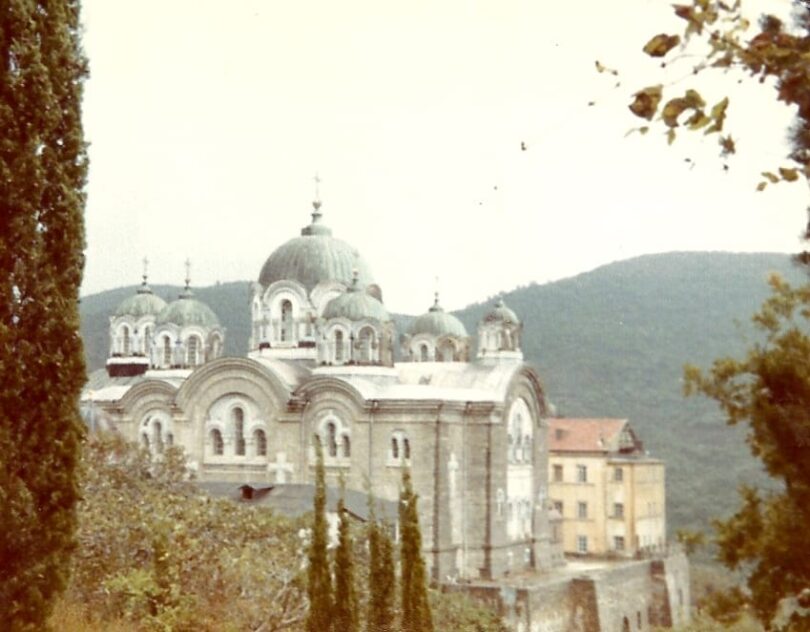


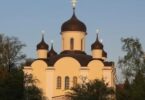
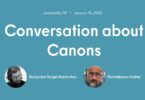
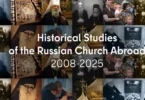
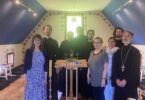
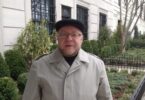
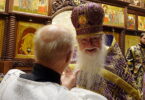
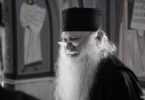

Interesting!
A good read.
I visit Archimandrite Nikolai in 1969. We corresponded for a year. Fr Nikolai was assisted by Fr Ioann, who gave me a walking stick as protection against the snakes. I passed on this ‘relic’ to Sister Elizabeth at Tolleshunt Knights. I returned in ?1970 and met Fr John and the other fathers. I was very impressed with the chanting.